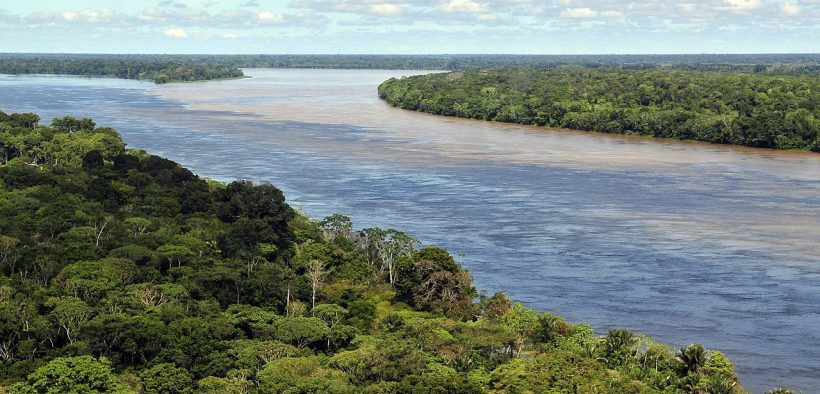Amazon Deforestation Surges As Bolsonaro Weakens Environmental Protections

“With Bolsonaro, people who destroy forests feel safe and those who protect forests feel threatened.”
Deforestation of Brazil’s Amazon rainforest reached its fastest rate in a decade last month, according to satellite images from Brazilian space research institute INPE. Analysts blame a surge in illegal logging, enabled by diminished environmental regulations under President Jair Bolsonaro, for the rapid increase in deforestation.
The images show the deforestation of 285 square miles in May 2019, a sharp uptake from the 212 square miles of Amazon rainforest deforested in May 2018. May marks the first of three months where logging tends to increase after the forest’s rainy season.
“If this upward curve continues, we could have a bad year for the Amazon forest.” Claudio Almeida, INPE satellite monitoring head, told Reuters. “It will depend on how much policing there is in the next two critical months.”
Environmentalists Fear Bolsonaro is Destroying Brazil’s Forests
After Bolsonaro took power in January, the forestry commission was moved from the environmental ministry to the agriculture ministry, which is run by the country’s powerful agribusiness lobby. Bolsonaro also transferred the authority to determine new indigenous lands from the indigenous affairs agency to the agriculture ministry, and has said he would not allow “one more centimeter” of land for indigenous reserves.
“With Bolsonaro, people who destroy forests feel safe and those who protect forests feel threatened,” Marcio Astrini of Greenpeace Brazil told Reuters.
Former government ministers warn the new president is seeking to systematically destroy Brazil’s environmental protection policies.
The Bolsonaro administration has issued the least amount of environmental penalties in 11 years, and the number of government inspections has decreased 70% since last year. Bolsonaro’s environmental minister, Ricardo Salles, has referred to climate change as a “secondary issue,” fired veteran inspectors, and was convicted of altering environmental maps to benefit miners when serving as head of Sao Paulo’s state environmental agency. According to Folha, Salles is moving to privatize the government agency that provided satellite imagery of the Amazon’s deforestation.
Forbes writer Kenneth Rapoza argued previous administrations rapidly deforested the Amazon and Bolsonaro merely represents the intensification of an ongoing trend. Rapoza writes that to save the Amazon, environmentalists should be focusing on China, the world’s greatest importer of forest-risk commodities like soy, paper, and pulp.
Brazil became the world’s biggest exporter of soy after China cut ties with U.S. soy exporters in retaliation to Trump administration tariffs. CDP China released a report stating growing domestic demand for soybeans “could potentially trigger further and faster deforestation.”
Rapoza points out how Greenpeace successfully persuaded McDonald’s to stop buying soy sourced from the Amazon region. Europe, the second largest importer of soy after China, has become more strict about forest-risk commodities, as has Norway‘s government pension fund, which has divested from companies involved in deforestation. These developments lead Rapoza to conclude that pressuring China on deforestation would be a more efficient strategy than focusing on Bolsonaro.
Despite being weakened by the Bolsonaro administration, Brazil’s environmental protection agency IBAMA is launching a large-scale operation to fight illegal logging in response to the alarming satellite images.
Youth climate activist Greta Thunberg condemned the rapid deforestation of the world’s greatest rainforest, a major source of carbon sequestration and oxygen, as like “sawing off the branch we all live on.”
“Disastrous deforestation like this must come to an end. And not just in the Amazon… We are literally sawing off the branch we all live on,” Thunberg tweeted.















